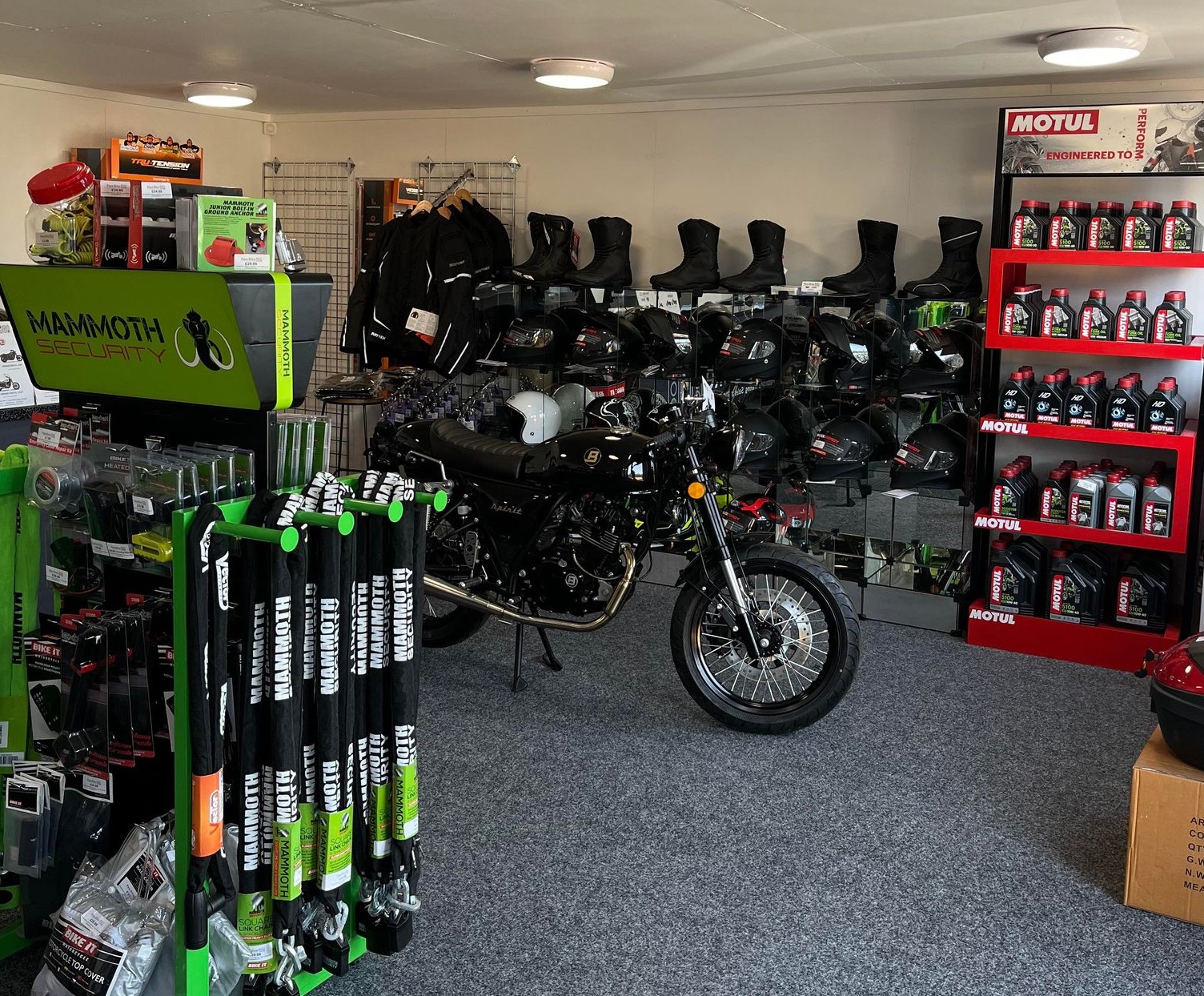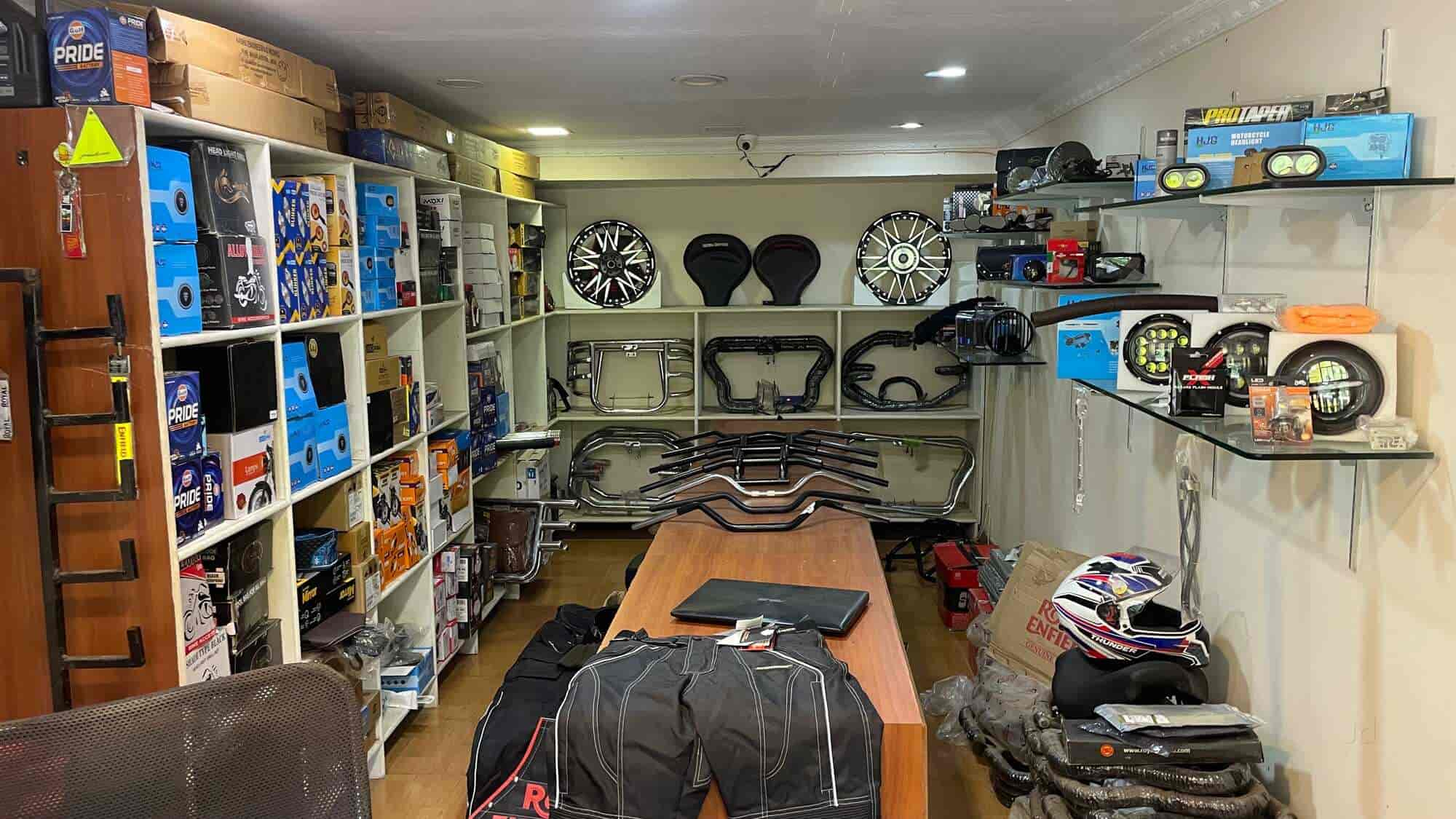Visit Our Motorcycle Shop for Expert Advice and Quality Products
Visit Our Motorcycle Shop for Expert Advice and Quality Products
Blog Article
Recognizing the Crucial Parts of a Bike: A Comprehensive Guide for Fanatics
For bike enthusiasts seeking to elevate their riding experience and guarantee their bikes run efficiently, recognizing the necessary components of a motorcycle is paramount. Each element, from the engine's detailed functions to the important duty of the braking mechanisms, not just affects performance yet additionally safety and convenience. This overview will stroll with the basic components that every rider should know with, allowing educated selections in both maintenance and potential upgrades. As we begin this exploration, one must ask: exactly how does each part interact to produce the seamless trip every fanatic looks for?
Engine Elements

The camshaft plays a critical function in controlling the timing of the engine's shutoffs, making certain the specific opening and closing essential for efficient gas and air consumption, in addition to exhaust expulsion. This timing is crucial to keeping optimal engine efficiency and performance. In addition, the carburetor or fuel injection system, depending upon the bike model, is accountable for blending air with gas in the correct ratio for burning.
The cooling system, either air or liquid-based, functions to keep the engine's temperature within operational limits, protecting against getting too hot and ensuring long life - motorbike shop. Each part, meticulously made and integrated, adds to the seamless operation of the engine, specifying the bike's power output and general performance
Transmission System
Important to the bike's functionality, the transmission system guarantees reliable power transfer from the engine to the wheels. This system comprises several important parts, including the clutch, transmission, and last drive, each playing a vital role in equating the engine's power right into activity. The clutch, typically operated by a hand lever, serves to engage and disengage the engine from the transmission, allowing for smooth gear changes and controlled acceleration.
The gearbox, frequently referred to as the transmission appropriate, consists of a collection of equipments that cyclists can manually change via to readjust the bike's rate and torque result. These equipments are set up in a sequence that allows the motorbike to speed up smoothly and maintain optimal engine performance across numerous rates. Many bikes make use of a consecutive gearbox, requiring the rider to shift equipments in a fixed order.
Braking Systems
While recognizing the transmission system is vital to using a motorbike's power, equally vital is the capacity to control and quit that power properly, which is where stopping devices enter play. Brakes are crucial for safety and security and performance, providing the cyclist with the essential control to browse various surfaces and problems. Normally, motorbikes include two sorts of braking systems: disc brakes and drum brakes.
Disc brakes are more common in modern bikes due to their superior performance. This system supplies much better warmth dissipation, consistent efficiency, and boosted stopping power, specifically in wet conditions.
Alternatively, drum brakes, though much less common, are still found in some bikes. They work by pushing brake footwear versus the internal surface area of a drum connected to the wheel. While usually less efficient in warm dissipation and quiting power, drum brakes are simpler and more cost-effective.
Recognizing these braking systems' nuances permits bikers to maintain their motorcycles correctly and appreciate the engineering that makes certain reliable and safe quiting.
Suspension and Guiding
Suspension and steering systems are crucial elements that substantially affect a motorbike's handling and trip comfort. The suspension system, including forks at the front and shock absorbers at the back, takes in roadway abnormalities, improving stability and control. Front forks, inverted or generally telescopic, compress and rebound to mitigate impacts, while back shock absorbers maintain tire call with the road, critical for grip and security.
Steering, centered around the handlebars, attaches the rider to the motorbike's directional control. The guiding head bearings make sure smooth operation, enabling precise ability to move. Proper alignment and upkeep of click here to find out more these bearings are critical for predictable steering feedback and minimizing biker fatigue.
The suspension's adjustability is another critical element; preload, damping, and rebound settings permit customization to match numerous riding conditions and designs. This versatility is essential for enhancing performance, whether navigating city roads or tackling tough trails. Advancements like digital shock absorber offer real-time modifications, enhancing ride top quality throughout diverse surfaces.

Electrical Equipments
After making sure a regulated and smooth trip through efficient suspension and guiding systems, interest transforms to the electrical systems, a crucial aspect of contemporary bikes. These systems play an important role not just in beginning the engine however likewise in powering various components that improve the capability and safety of the motorcycle.
At the heart of a bike's electrical system is the battery, which shops electrical power necessary for beginning the engine and powering supporting systems - mx parts nz. The generator or generator, coupled with the rectifier-regulator, makes certain the battery continues to be charged while the motorcycle functions, transforming power right into electrical power and preserving voltage degrees
The ignition system, another critical component, is in charge of sparking the air-fuel mix in the engine's cyndrical tubes. Modern motorbikes frequently make use of an electronic ignition system, providing better efficiency and reliability contrasted to conventional systems.
Lighting systems, including headlights, tail lights, and signs, are also vital, making sure presence and safety and security for the cyclist. Added digital elements such as sensors, control devices, and shows add to advanced features like fuel shot administration, anti-lock braking systems (ABDOMINAL MUSCLE), and digital control panels, even more enhancing the riding experience.
Conclusion
An extensive comprehension of a motorcycle's important components, including the engine, transmission system, stopping devices, suspension, steering, and electrical systems, is important for enthusiasts aiming to optimize efficiency, safety, and convenience. Mastery of these elements permits notified decisions pertaining to maintenance and upgrades, ultimately improving the riding experience. By incorporating this knowledge, cyclists can ensure their motorbikes operate at peak efficiency and dependability, thereby making the most of both enjoyment and durability of their cars.
For motorcycle enthusiasts looking to raise their riding experience and guarantee their bikes run smoothly, understanding the vital components of a motorbike is vital.Indispensable to the motorbike's capability, the transmission system ensures reliable power transfer from the engine to the wheels.While comprehending the transmission system is key additional hints to using a motorbike touring gear bike's power, just as vital is the ability to manage and stop that power successfully, which is where braking devices come into play. Generally, bikes include 2 kinds of braking systems: disc brakes and drum brakes.
A complete understanding of a motorcycle's important parts, consisting of the engine, transmission system, braking devices, suspension, steering, and electrical systems, is vital for fanatics aiming to enhance performance, convenience, and safety and security.
Report this page